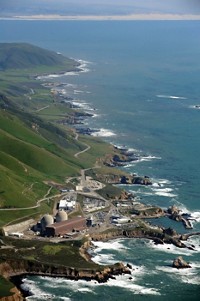Advertisement
Grab your lab coat. Let's get started
Welcome!
Welcome!
Create an account below to get 6 C&EN articles per month, receive newsletters and more - all free.
It seems this is your first time logging in online. Please enter the following information to continue.
As an ACS member you automatically get access to this site. All we need is few more details to create your reading experience.
Not you? Sign in with a different account.
Not you? Sign in with a different account.
ERROR 1
ERROR 1
ERROR 2
ERROR 2
ERROR 2
ERROR 2
ERROR 2
Password and Confirm password must match.
If you have an ACS member number, please enter it here so we can link this account to your membership. (optional)
ERROR 2
ACS values your privacy. By submitting your information, you are gaining access to C&EN and subscribing to our weekly newsletter. We use the information you provide to make your reading experience better, and we will never sell your data to third party members.
Environment
Nuclear Power, Transportation
October 13, 2008
| A version of this story appeared in
Volume 86, Issue 41
THE PROPOSAL advocated by Malcolm L. Watts (C&EN, Aug. 11, page 6) and others for the installation of nuclear power stations to provide energy for battery-driven autos would indeed solve the problem of carbon emissions for that mode of transportation. There are other problems, however, where electricity is either unsuitable or usable only after considerable conversion expense and lengthy periods of time.
These problems include fuel energy for aircraft, railroads, large trucks, ships, and home heating in cold climates. Recourse to coal-to-oil conversion will be necessary at some point for these and should be initiated. Although some may argue that auto transportation is the biggest user of energy and therefore the most deserving of problem solving, think of the consequences of fuel shortages in these smaller but vital segments of the U.S. economy. Considering the increasing consumption of hydrocarbon fuels in China and India and the "normal" use in the rest of the world, the supply of crude oil may not last 50 years into the future, the forecasted time when the affordable oil supply will vanish.
It seems to me that what is needed is a well-thought-out plan covering all the requirements and a firm resolve and commitment to carry it out.
William G. Finnegan
Reno, Nev.



Join the conversation
Contact the reporter
Submit a Letter to the Editor for publication
Engage with us on Twitter